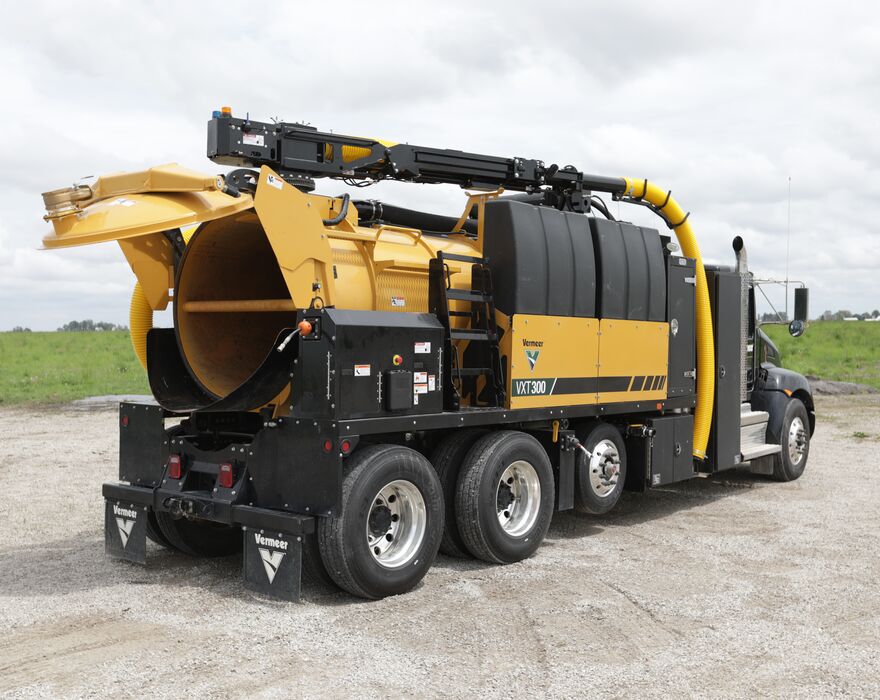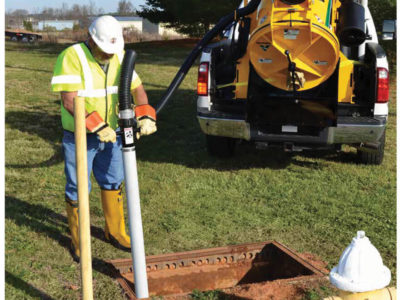When it’s time to lay utilities in the ground, it is important to know how to install that product (usually by microtrenching), while leaving a durable road or ground surface behind. To successfully do both, grout is used to fill the trench in. Additionally, product needs to be laid in a ‘clean’ trench — one without excess rocks or dirt in the bottom. Let’s take a look into this process and how a vacuum excavator or hydro-excavator can help maximize efficiency and productivity on the job site.
What is grouting?
Grout (also known as slurry) is a form of concrete used to fill a trench after laying the product. The term ‘grout’ encompasses different substances that can be sand-based, gravel-based or anything in between. This important step in the product installation process helps protect the product in the ground and creates a surface that can withstand harsh weather conditions.
The decision on what type of grout to use is made by an engineer, designer, contractor or city. Bo Howell, product specialist for Utility Infrastructure says, “There is more than one way to grout, and multiple grout products to choose from. It really comes down to the soil conditions, surface material, and how that product will react when bonded in these conditions.”
When installing a utility such as electrical or fiber, a contractor will fill the trench with the grout of their choice within several inches of the road or ground surface. Once that is complete, the top needs to be sealed with another material such as epoxy or asphalt.
Howell says, “The goal of the grouting process is to bond two sides of a road together, while protecting the product that is laid underneath. At the same time, we want to bond this with materials that are able to withstand adverse weather conditions.”
During the grouting process, a key step is to ensure you are installing product in a clean trench, and at the correct depth. If that product is not at the correct depth, it will not function properly or be protected as well.
How to achieve a clean trench
If you have unwanted materials in the trench prior to laying product, that can impact the depth of the product. Howell explains, “If product is laid with gravel underneath, and grout is poured on top along with the sealant material of your choice, that’s a lot of pressure on the product. When that product is being pushed down on that abrasive gravel, it can damage the product significantly with that weight.”
To get a clean trench, a vacuum excavator or hydro-excavator equipment is commonly used. There are a couple of options when it comes to choosing a vacuum excavator, such as a trailer or truck mounted model. The full lineup varies on tank size, engine offerings, suction power and hose size.
For a vacuum with high performance at an economical value, there are a few options, such as the EV150 and CV SGT vacuum excavators. Operators who are familiar with vacuum excavators and are looking for a robust design and powerful suction, the VXT300 vacuum truck works well on sites where quick and efficient unloading is priority. These options give contractors flexibility when choosing which vacuum excavator will work best for them on a variety of jobsites.

Protecting product and leaving behind a clean road surface is more important than ever, especially in areas with high traffic, such as cities or suburbs. When you are installing utilities, be sure to take the necessary steps to get the trench as clean as possible, efficiently. This will help keep the product functioning and properly protected, so you can keep moving to the next jobsite.
Contact your local Vermeer dealer for more information on vacuum excavators.
Vermeer Corporation and Vermeer MV Solutions, Inc. reserve the right to make changes in engineering, design and specifications; add improvements; or discontinue manufacturing or distribution at any time without notice or obligation. Equipment shown is for illustrative purposes only and may display optional accessories or components specific to their global region. Please contact your local Vermeer dealer for more information on machine specifications.
Vermeer and the Vermeer logo are trademarks of Vermeer Manufacturing Company in the U.S. and/or other countries. © 2022 Vermeer Corporation. All Rights Reserved.
